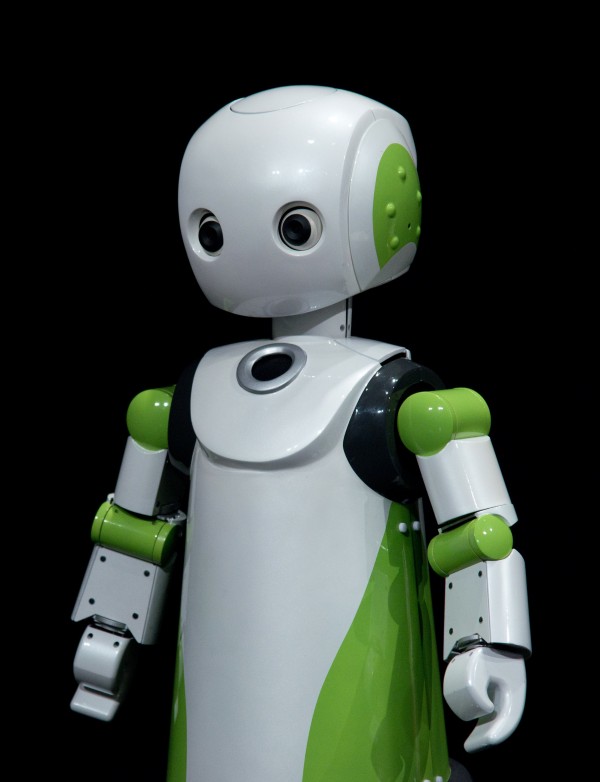Photo by JOHANNA AUSTIN
 BY BRANDON LAFVING ARTS CORRESPONDENT Oriza Hirata, an experimental playwright of international renown and director of Osaka University’s Seinendan Theater Company, often ventures into uncharted territory. He’s bringing two of his recent works to Philadelphia this weekend that feature robots in lead roles interacting with human co-leads. The robots were created and programmed by a leader in the field, Professor Hiroshi Ishiguro. Dr. Ishiguro is director of the Intelligent Robotics Laboratory at Osaka University and has worked toward creating robots that look shockingly human-ish. The first breakthrough in this vein occurred in 2005 when he unveiled his “female” android to the public. He remarked at the time: “A human-like appearance gives a robot a strong feeling of presence.” Following the idea through, he created Geminoid, a male android resembling himself, just three years later. Mr. Hirata is utilizing Ishiguro’s research with the two short works in Human-Robot Theater: “I, Worker,” (a nod to Isaac Asimov’s book) and “Sayonara,” (goodbye in Japanese). Phawker was invited to email Mr. Hirata some questions about his work and via a translator he responded thusly:
BY BRANDON LAFVING ARTS CORRESPONDENT Oriza Hirata, an experimental playwright of international renown and director of Osaka University’s Seinendan Theater Company, often ventures into uncharted territory. He’s bringing two of his recent works to Philadelphia this weekend that feature robots in lead roles interacting with human co-leads. The robots were created and programmed by a leader in the field, Professor Hiroshi Ishiguro. Dr. Ishiguro is director of the Intelligent Robotics Laboratory at Osaka University and has worked toward creating robots that look shockingly human-ish. The first breakthrough in this vein occurred in 2005 when he unveiled his “female” android to the public. He remarked at the time: “A human-like appearance gives a robot a strong feeling of presence.” Following the idea through, he created Geminoid, a male android resembling himself, just three years later. Mr. Hirata is utilizing Ishiguro’s research with the two short works in Human-Robot Theater: “I, Worker,” (a nod to Isaac Asimov’s book) and “Sayonara,” (goodbye in Japanese). Phawker was invited to email Mr. Hirata some questions about his work and via a translator he responded thusly:
PHAWKER: You work tirelessly, collaborating with theater people from across the globe. Why decide to work with robots?
ORIZA HIRATA: Because no one has done it before.
PHAWKER: You are very involved in education. Even before you became a professor at Osaka University, your workshop methodology was being taught to high-schoolers. For someone accustomed to teaching and directing at the same time, was it frustrating to work with unintelligent, unfeeling machines?
ORIZA HIRATA: It’s no more frustrating than people.
PHAWKER: Can you describe what it was like to work with Dr. Ishiguro Hitachi on this project? Did his contributions or the robots affect your creative process?
ORIZA HIRATA: Collaboration with Dr. Ishiguro Hitachi has been more stimulating than ever. Moreover, the way we think of people and communications are surprisingly similar, so it is extremely productive to work with him.
PHAWKER: Does he seek to create a perfect representation of human beings in machine form? Do you want him to succeed?
ORIZA HIRATA: No, we are not thinking about making robots similar to people. We are researching what it means to look like a human.
PHAWKER: Do you see a trajectory in the way we distinguish machines from ourselves?
ORIZA HIRATA: This distinction isn’t only due to the way we see the difference between people and robots – it relates to culture and history. Japan isn’t a Christian country. Rather, people and objects share an affinity for each other. We believe god dwells in everything.
PHAWKER: What is your favorite sci-fi anime?
ORIZA HIRATA: “Castle In The Sky” by Ghibli.

